Birds of Our Observations
Let yourself be inspired by our fascinating observations from the past years and discover the diverse world of nature. Here, we regularly present a compilation of our latest discoveries and observations.
If you are looking for a specific bird, you can find it using the search field:

European bee-eater (Merops apiaster)
The European bee-eater (Merops apiaster) is predominantly found in the southern and central regions of Europe, in North and South Africa, and in the western parts of Asia. This bird species is highly migratory but overwinters in the tropical regions of Africa, while the populations in South Africa are resident throughout the year. They prefer open landscapes such as forests, river valleys, meadows, and plains, as well as cultivated areas with scattered trees. In Africa, bee-eaters also inhabit savannas near lakes and cultivated lands. In Germany, it is also a breeding bird that regularly visits.
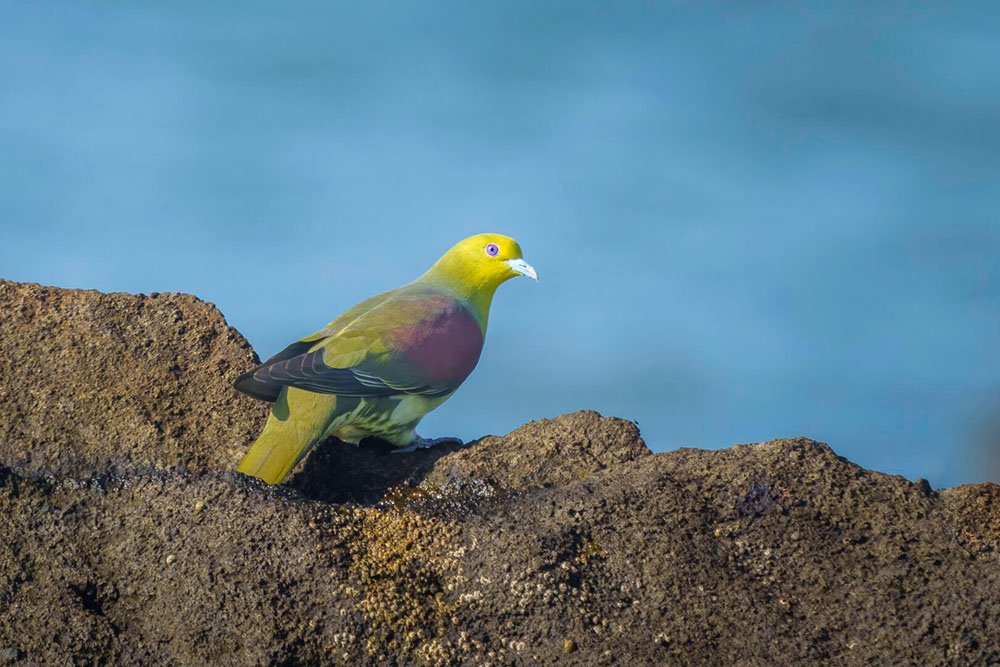
White-bellied green pigeon (Treron sieboldii)
The white-bellied green pigeon (Treron sieboldii), scientifically known as Treron sieboldii, belongs to the pigeon family. The Japanese name "Aobato" is derived from the green coloring of the body and the sound of its call during the breeding season, which sounds like "Ao-Ao." It was previously also referred to as "Yamabato" (Mountain Pigeon). This species of pigeon possesses a number of fascinating
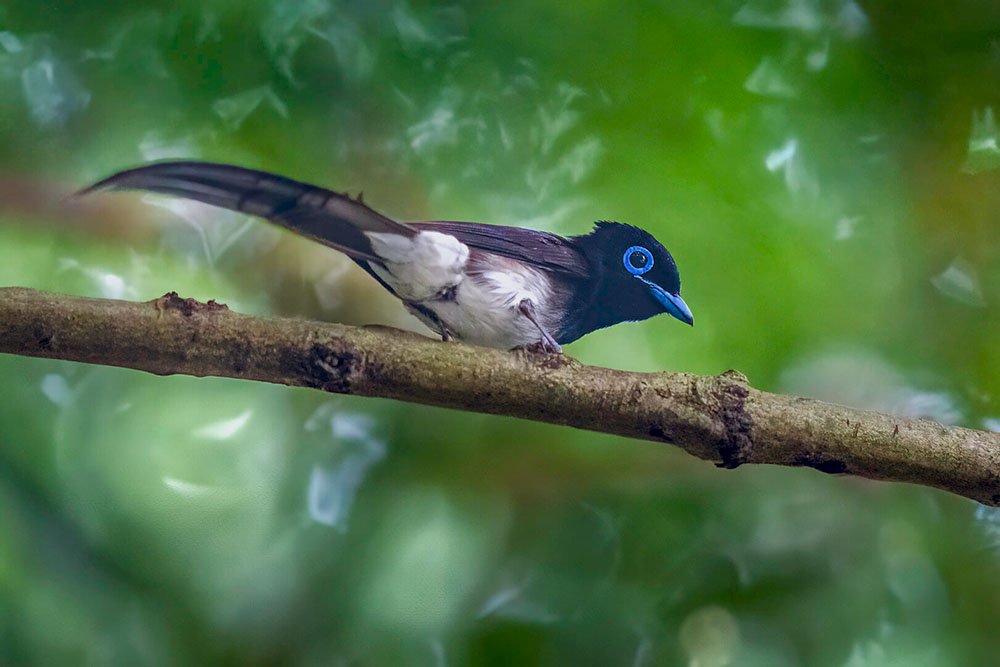
Black paradise flycatcher (Terpsiphone atrocaudata)
The black paradise flycatcher (Terpsiphone atrocaudata), also known as Sankōchō in Japan, is a striking migratory bird from the flycatcher family. It is characterized by a long, distinctive tail, which in males can be up to twice the length of the head-body length.
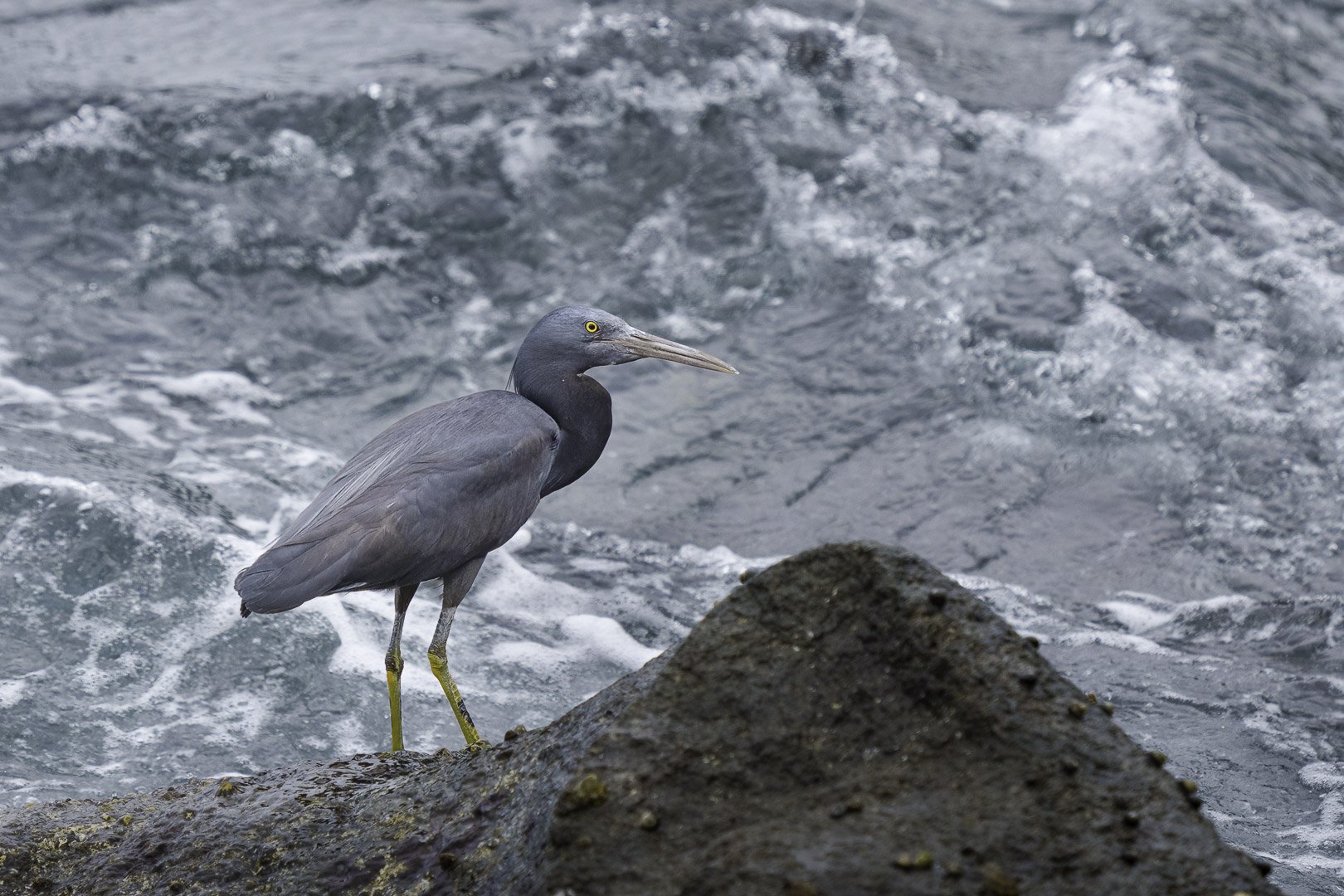
Pacific reef heron (Egretta sacra)
Pacific reef herons (Egretta sacra) are small herons that inhabit rocky coastlines. They grow up to 63 cm in length, with a wingspan ranging from 90 to 110 cm, and weigh around 400 grams. There are two color morphs: white and dark gray. Both morphs have yellow-green bills and legs.
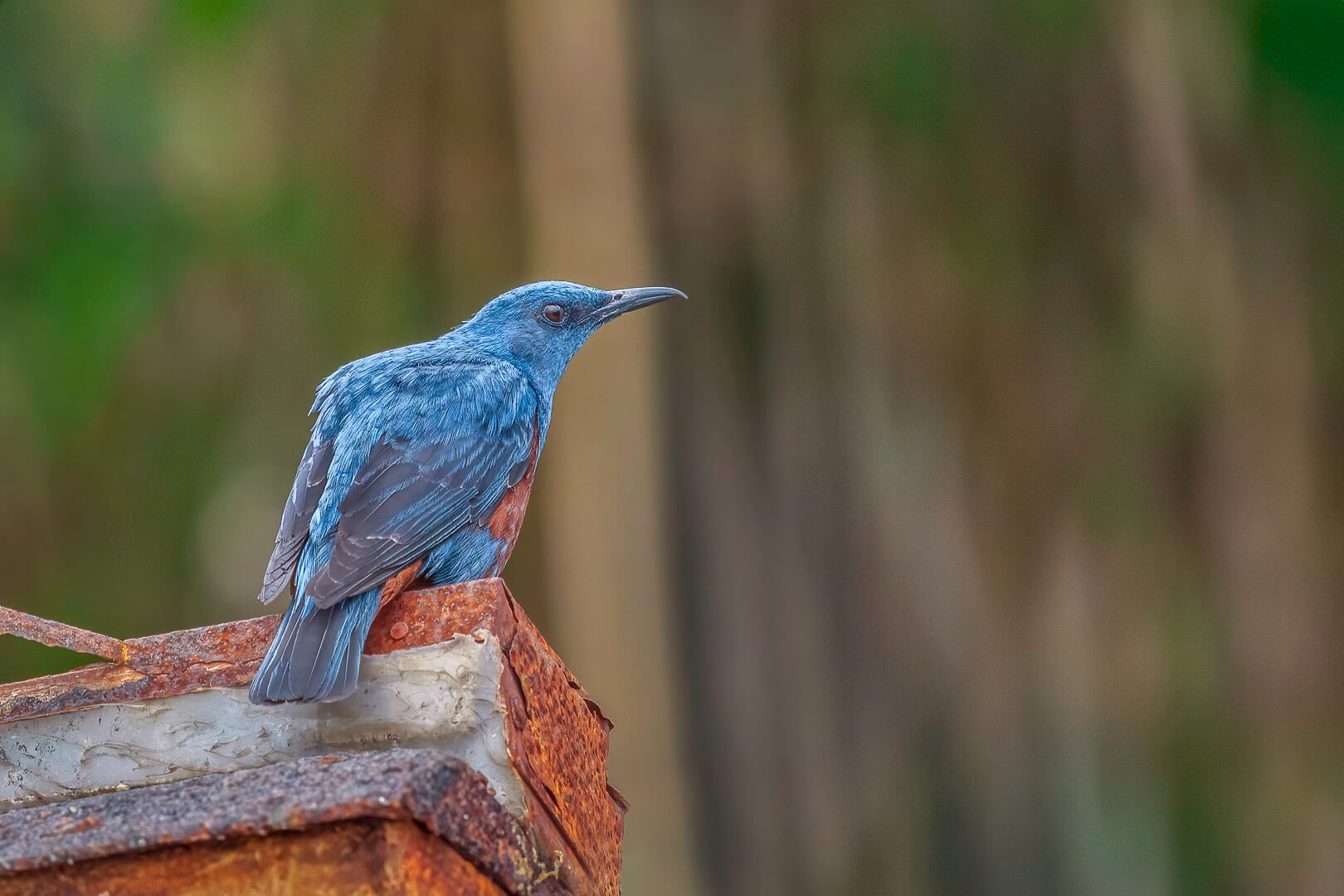
Blue rock thrush (Monticola solitarius)
The Blue rock thrush, also known as Monticola solitarius, is a fascinating bird belonging to the order of passerines. With a length of about 20 centimeters, it is slightly smaller than the Starling, but its striking coloration and elusive behavior make it an interesting sight.
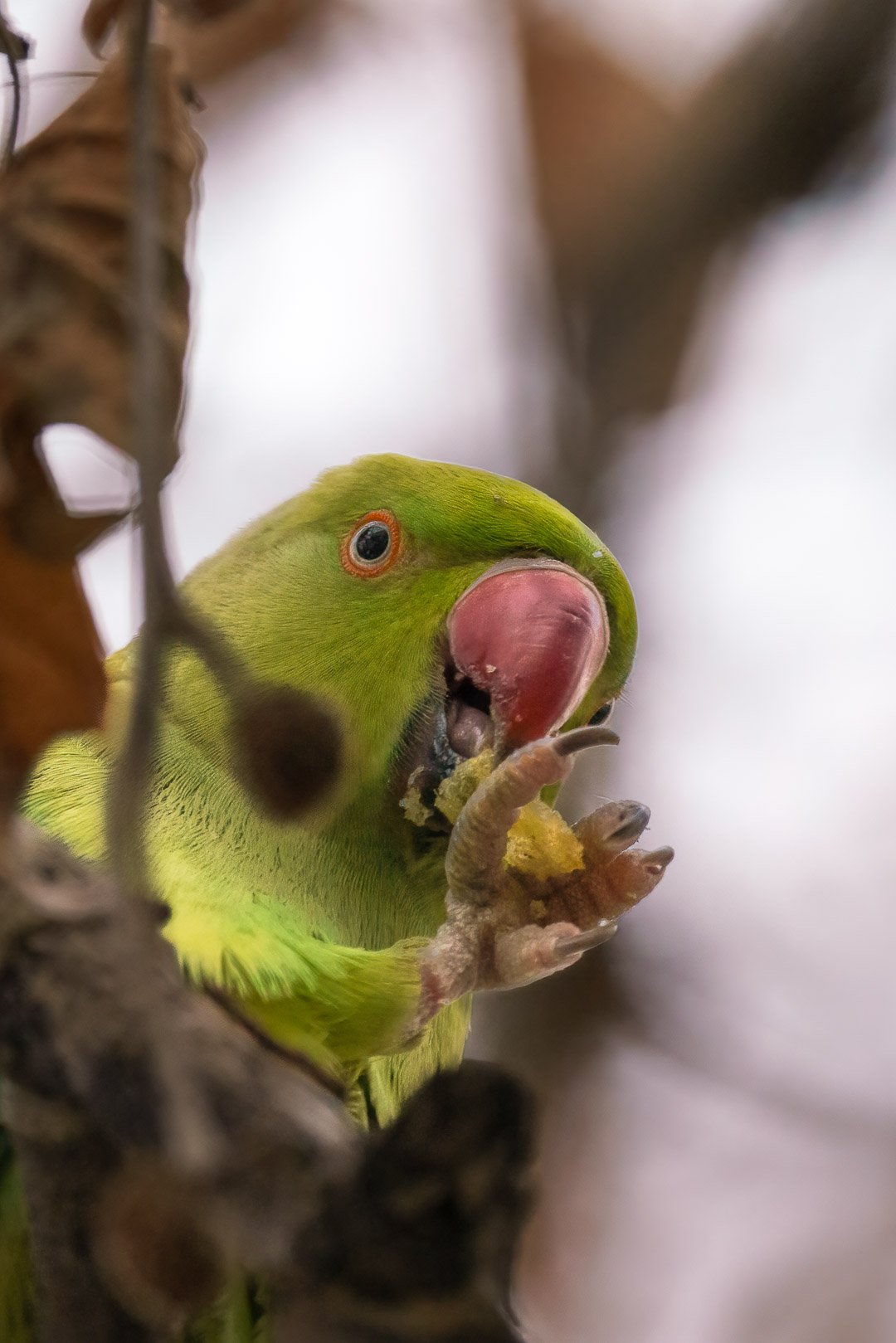
Rose-ringed parakeet (Psittacula krameri)
The rose-ringed parakeet (Psittacula krameri), also known as the ring-necked parakeet or small Alexandrine parakeet, belonging to the family Psittacidae, is an extremely widespread bird species. Its habitat extends from Africa south of the Sahara to Asia, starting with Pakistan and India. It is not only found in its natural habitat but also in Europe.
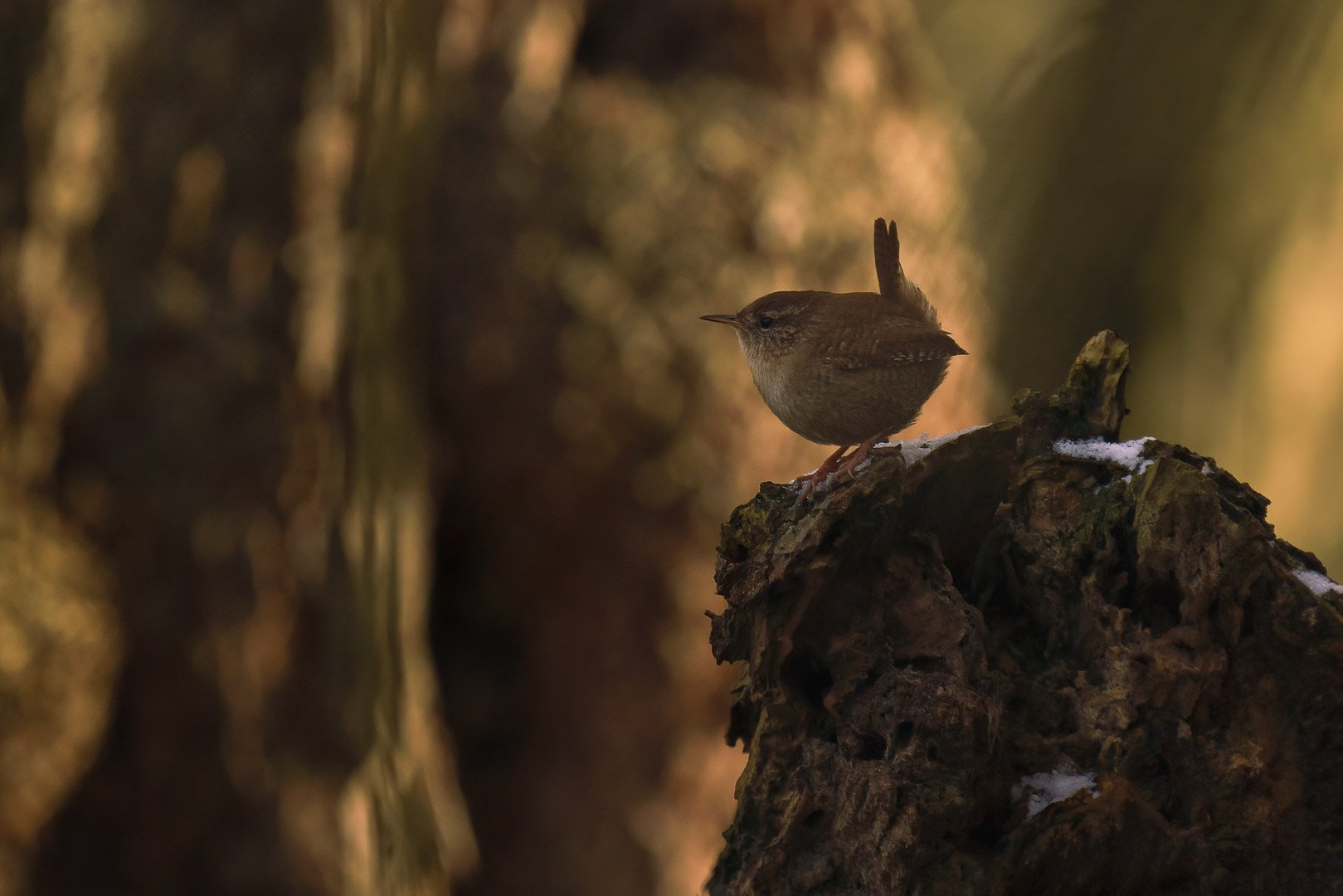
Eurasian wren (Troglodytes troglodytes)
The Eurasian wren (Troglodytes troglodytes) is a small bird measuring only 9-10.5 cm in size and weighing 10 g. Its rust-brown banded plumage camouflages it perfectly in nature. It primarily feeds on insects, spiders, and other small invertebrates, skillfully hopping through the undergrowth. Although the wren is known as a poor flyer
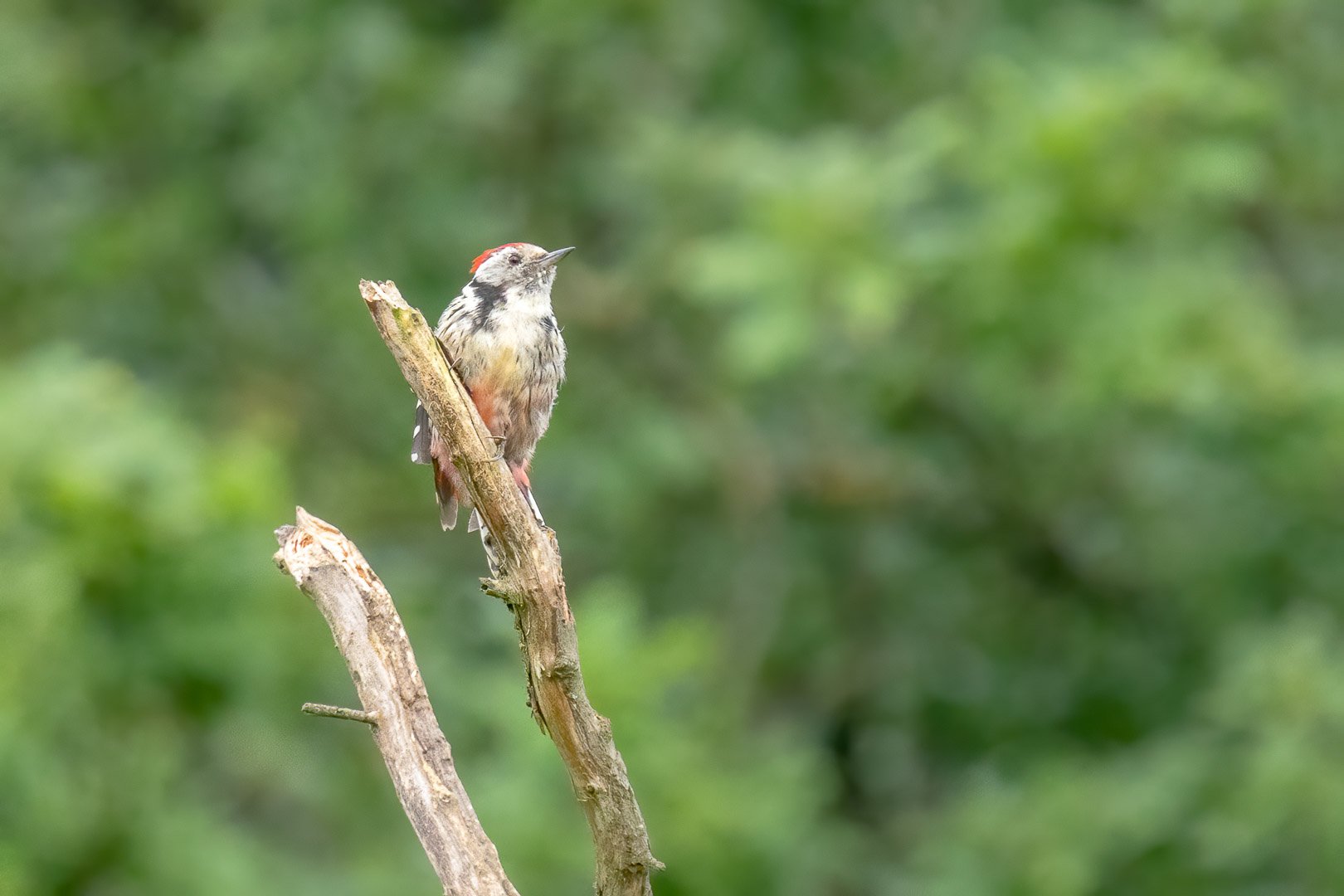
Middle spotted woodpecker (Dendrocoptes medius)
In the Western and Southwestern Palearctic, the Middle Spotted Woodpecker (Dendrocoptes medius) is a relatively rare bird species within the woodpecker family (Picidae). The species prefers tree canopies with coarse bark and trunk areas for foraging, and therefore, in many parts of its distribution range, it relies on old oak forests. However, it has also been documented in

Mallard (Anas platyrhynchos)
The Mallard (Anas platyrhynchos) belongs to the family Anatidae and is the largest and most widespread dabbling duck in Europe. Males have a striking green metallic head plumage, a yellow bill, and a white neck ring, while females have a more inconspicuous light brown plumage and an orange bill.
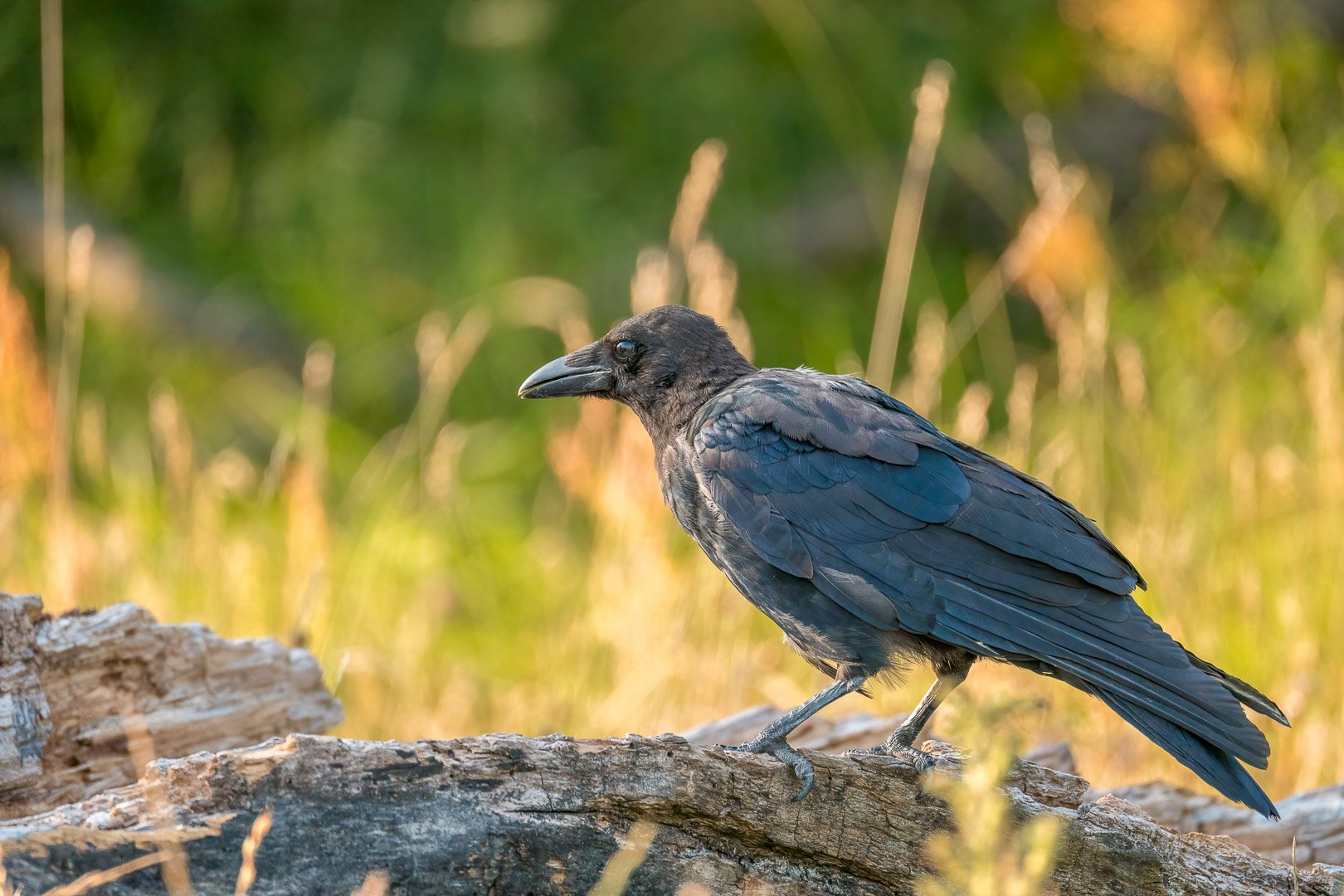
Common raven (Corvus corax)
The common raven (Corvus corax) is a songbird from the family of corvids (Corvidae) and the largest European species of raven. Its scientific name consists of the Greek "Corax" and the Latin "Corvus," both meaning "raven." The first syllable of its German name, "Kolk," is likely onomatopoeic and mimics the call of the
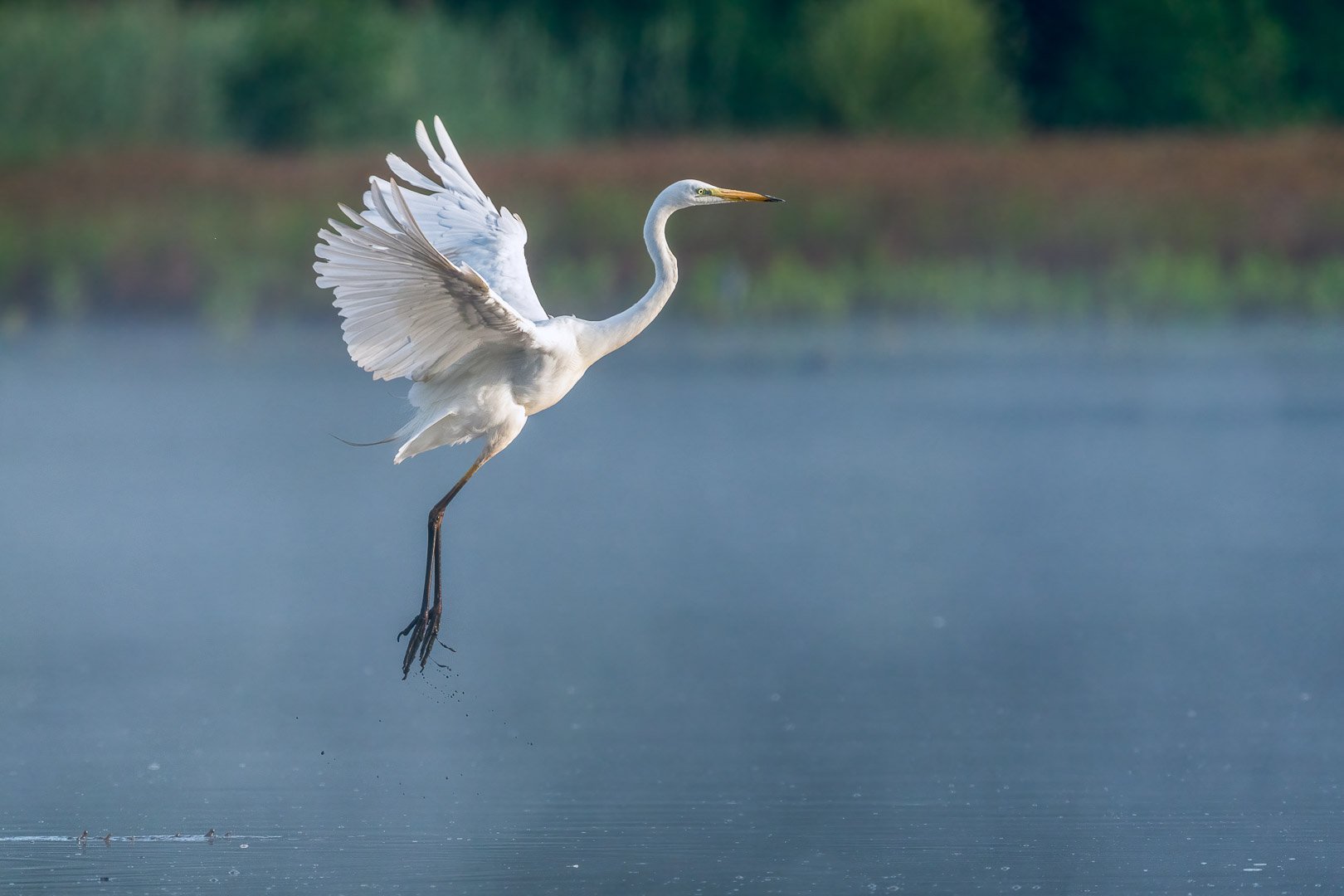
Great egret (Ardea alba)
The great egret (Ardea alba) is a species belonging to the heron family. With a body length of up to one meter and a wingspan of up to 1.70 meters, it is one of the largest heron species in Europe. The weight varies between 0.7 and 1.5 kilograms. The great egret mainly feeds on insects, amphibians, fish, and

Eurasian magpie (Pica pica)
The Eurasian magpie (Pica pica) is a bird from the family of corvids and inhabits large parts of Europe, Asia, and Northern North Africa. It is particularly common in urban areas and is easily recognizable due to its black-and-white plumage with long tail feathers. Magpies are among the most intelligent birds and are considered one of the most intelligent non-human beings. The nidopallium

Hooded crow (Corvus cornix)
The hooded crow (Corvus cornix) belongs to the family of corvids (Corvidae) and is a Eurasian bird species that is widespread in Northern, Eastern, and Southeastern Europe as well as parts of the Near East. It is an ashy-gray bird with a black head, neck, wings, tail, and thigh feathers, as well as a black bill, eyes, and feet. As an omnivore, it resembles the carrion crow (Corvus corone) in morphology and behavior to such an extent that many experts long regarded it as a subspecies of the same. Hybridization,
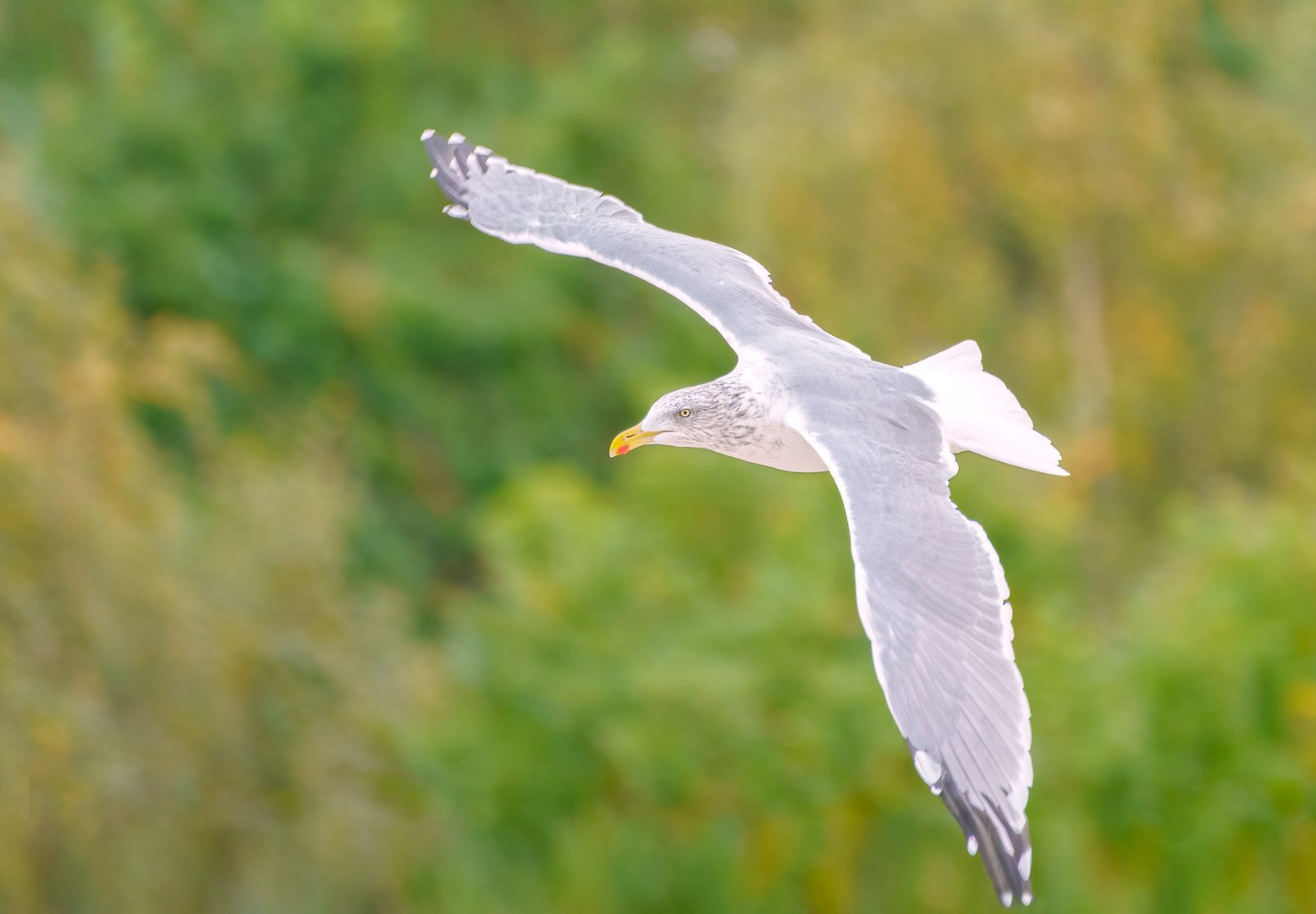
European herring gull (Larus argentatus)
The European herring gull (Larus argentatus) is the most common large gull in northern and western Europe and a bird species within the gulls (Larinae) subfamily. Its distribution ranges from the coast of Fennoscandia across the Baltic Sea, the North Sea, and the English Channel to the Atlantic coast of France and the British Isles, as well as Iceland. As colony breeders, herring gulls are mainly found on inaccessible islands.

Black-headed gull (Chroicocephalus ridibundus)
The black-headed gull (Chroicocephalus ridibundus), formerly known as Larus ridibundus, inhabits wide areas of the northern Palearctic, from Iceland and Ireland to Kamchatka, as a small species of gull. It prefers to breed in the littoral zones of larger inland waters but has increasingly also been found nesting on coasts in recent times. In northern Central Europe, the species is a common breeding bird and winters in large numbers in Central and Western Europe. The gull reaches a body length of 35 to 39 cm and a wingspan of
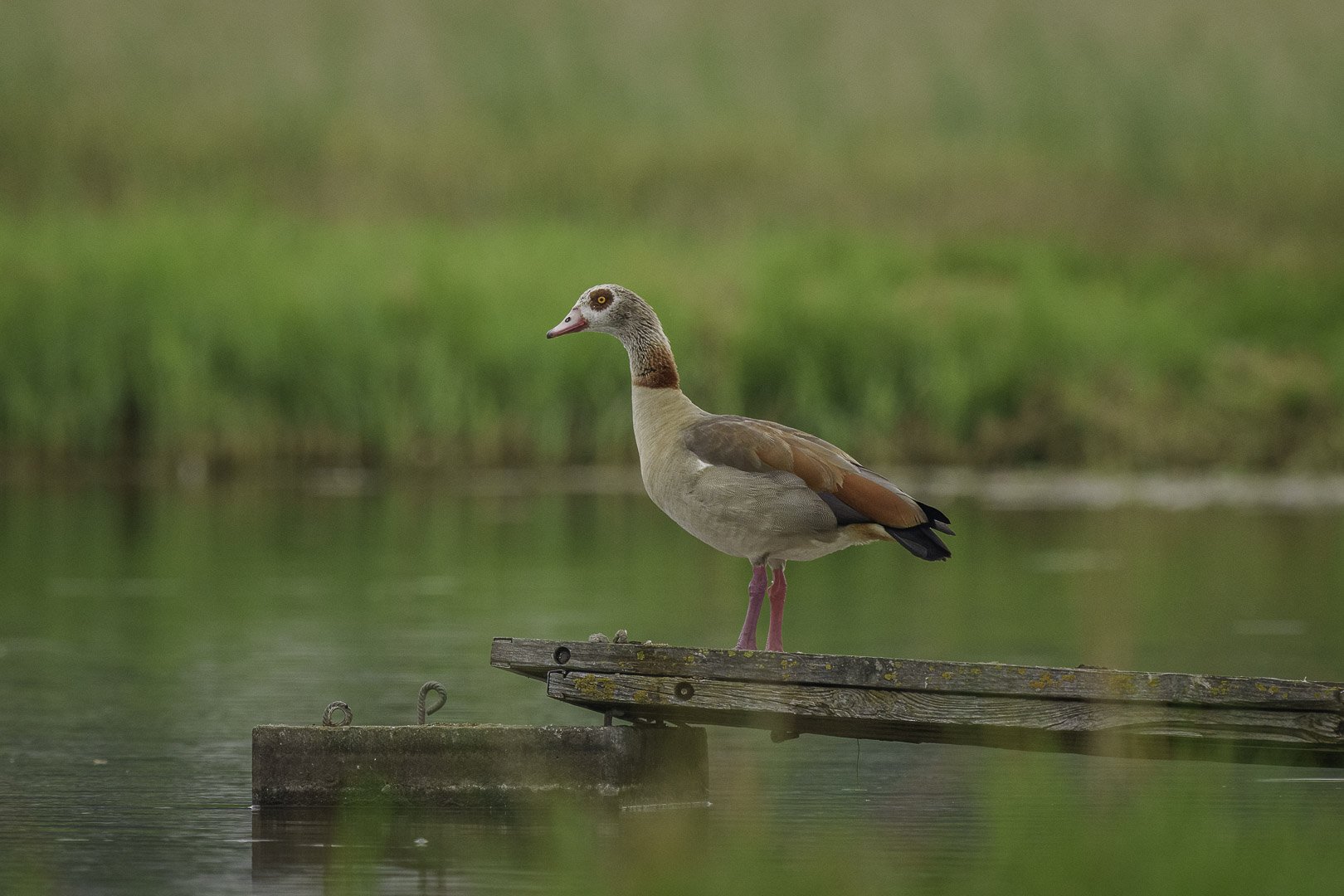
Egyptian goose (Alopochen aegyptiaca)
The Egyptian goose (Alopochen aegyptiaca) originates from Africa and is the only known representative of its genus. It is often classified as a semi-goose and prefers nutrient-rich inland lakes and rivers as its habitat. In Africa, it is considered the most commonly encountered waterfowl. In recent decades, the Egyptian goose has spread along the Rhine in Central Europe, starting from captive escapees mainly originating from the Netherlands. By now, it has also

Mandarin duck (Aix galericulata)
The mandarin duck (Aix galericulata) belongs to the family of waterfowl (Anatidae) and the genus Aix. Originally from East Asia, there are also feral park populations in Europe that have arisen from escaped captive birds. While the duck species has been highly popular as ornamental poultry for centuries, populations in its original range are declining, and

Canada goose (Branta canadensis)
The Canada goose (Branta canadensis) belongs to the family of waterfowl (Anatidae) and is the most widespread goose worldwide. Its original habitat is in North America, where it is a characteristic bird of lowlands and breeds at inland lakes in prairie and agricultural areas. Its migration in characteristic V-formation to wintering grounds and back to breeding sites in the spring symbolizes in

Common reed bunting (Emberiza schoeniclus)
The common reed bunting (Emberiza schoeniclus), also known as the reed sparrow, belongs to the family of buntings (Emberizidae) and is native to Europe, North Africa, and East Asia. It is only absent from some Mediterranean islands. The reed bunting is commonly found, especially in reed and sedge habitats. In Central Europe, it is a partial migrant, as most birds leave the region in October/November and return in February and March. During winter, the reed bunting resides in North Africa.
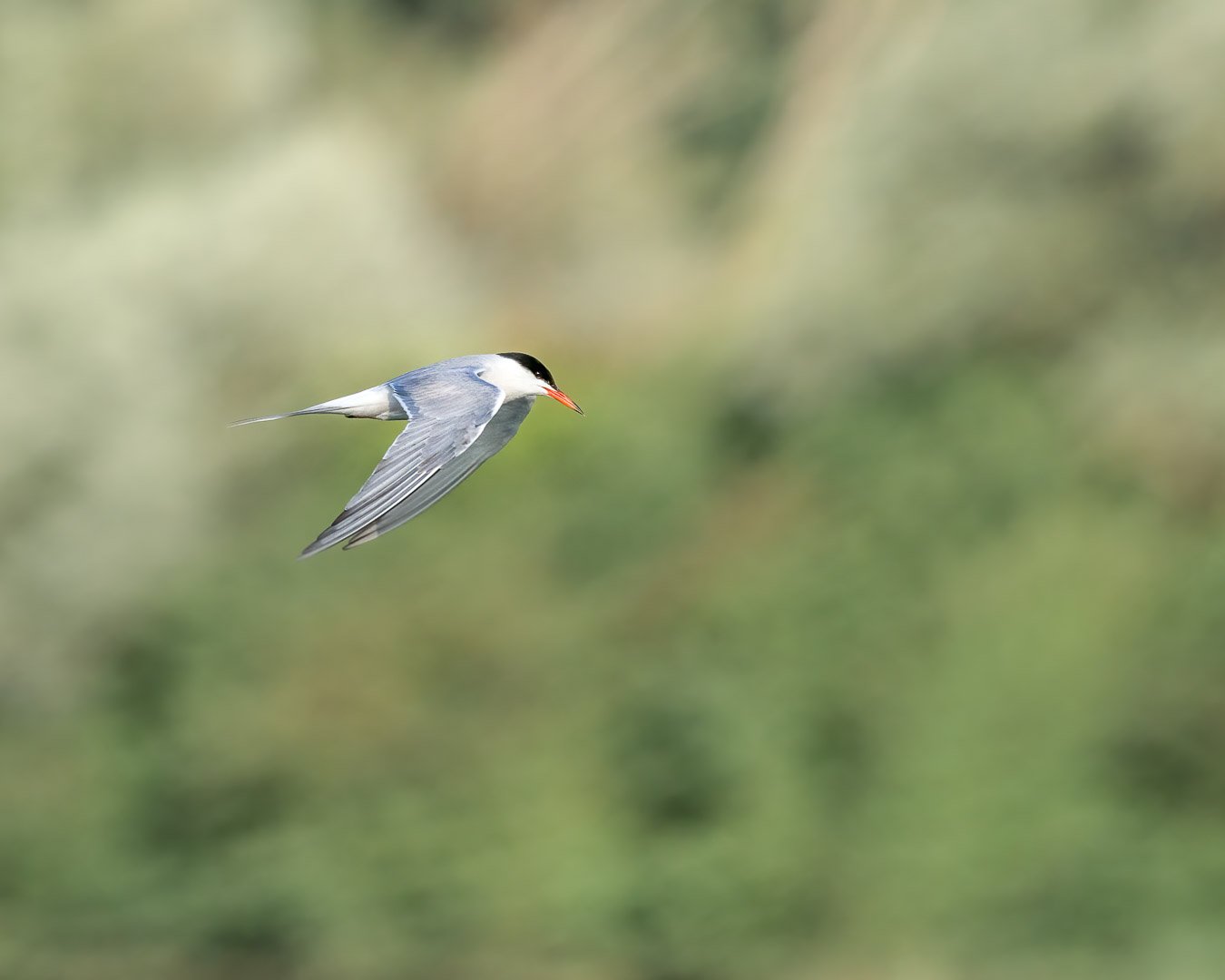
Common tern (Sterna hirundo)
The common tern (Sterna hirundo) belongs to the subfamily of terns (Sterninae) and is a widespread, although not very common, breeding and summer bird species in Central Europe. During migration periods, many migrating birds can also be observed in the Central European region. The common tern resembles the coastal tern but is
